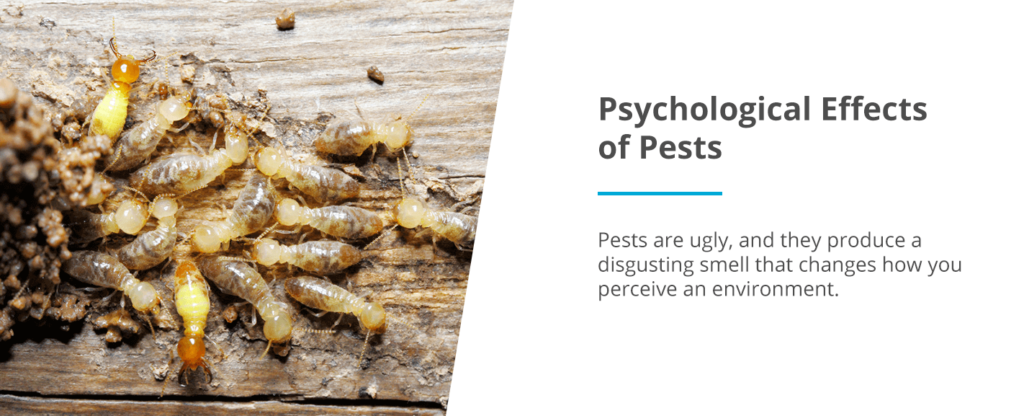How Eco Bed Bug Exterminators Dc can Save You Time, Stress, and Money.
Table of Contents3 Easy Facts About Eco Bed Bug Exterminators Dc DescribedThe Eco Bed Bug Exterminators Dc Ideas4 Simple Techniques For Eco Bed Bug Exterminators DcRumored Buzz on Eco Bed Bug Exterminators DcSome Of Eco Bed Bug Exterminators Dc
Since pesticides are poisonous, they are likewise potentially dangerous to humans, animals, other organisms, and the setting. Consequently, people who make use of pesticides or regularly come in call with them have to comprehend the relative toxicity, possible wellness impacts, and preventative steps to decrease exposure to the items they use. Hazard, or risk, of utilizing pesticides is the possibility for injury, or the degree of danger involved in making use of a chemical under a provided set of problems.
However, applicators can reduce or nearly remove direct exposure-- and therefore minimize risk-- by adhering to the label directions, utilizing personal safety clothes and tools (PPE), and handling the pesticide appropriately. For instance, even more than 95 percent of all chemical exposures come from dermal direct exposure, mainly to the hands and forearms. By wearing a pair of unlined, chemical-resistant handwear covers, this kind of exposure can be virtually gotten rid of.
The unsafe effects that occur from a single exposure by any route of entrance are called "intense effects." The four courses of exposure are dermal (skin), inhalation (lungs), oral (mouth), and the eyes. Acute poisoning is figured out by analyzing the dermal poisoning, breathing poisoning, and oral toxicity of guinea pig.
Top Guidelines Of Eco Bed Bug Exterminators Dc
Intense poisoning is determined as the amount or focus of a toxicant-- the a.i.-- required to eliminate half of the animals in a test populace. This action is generally shared as the LD50 (dangerous dosage 50) or the LC50 (deadly concentration 50). Additionally, the LD50 and LC50 values are based upon a single dosage and are taped in milligrams of chemical per kg of body weight (mg/kg) of the guinea pig or in components per million (ppm).
The reduced the LD50 or LC50 worth of a chemical product, the better its poisoning to humans and animals. Chemicals with a high LD50 are the least hazardous to human beings if made use of according to the directions on the item tag. The chronic poisoning of a chemical is determined by subjecting examination pets to lasting exposure to the active component.
The chronic poisoning of a pesticide is harder than acute toxicity to figure out with laboratory analysis. Products are categorized on the basis of their relative acute toxicity (their LD50 or LC50 values). Chemicals that are identified as highly toxic (Poisoning Classification I) on the basis of either oral, facial, or inhalation toxicity should have the signal words risk and POISON printed in red with a skull and crossbones sign plainly showed on the front panel of the plan label.
The acute (solitary dose) dental LD50 for pesticide items in this team ranges from a trace quantity to 50 mg/kg. Exposure of a few declines of a material taken orally could be fatal to a 150-pound person. https://www.edocr.com/v/wel7jgoa/ecobedbug3xt/christopher-savage. Some chemical products have simply the signal word threat, which informs you absolutely nothing regarding the acute poisoning, simply that the product can cause severe eye damages or extreme skin inflammation
Eco Bed Bug Exterminators Dc Fundamentals Explained
In this category, the severe oral LD50 varieties from 50 to 500 mg/kg. A tsp to an ounce of this product might be deadly to a 150-pound person (exterminator DC). Chemical items categorized as either slightly toxic or reasonably safe (Poisoning Categories III and IV) are needed to have the signal word CAUTION on the pesticide tag

All pesticide toxicity values, including the Consisting of, can be found on the product's Item Safety Product Sheet (MSDS). Chemical labels and MSDS can be gotten from merchants or makes - https://www.provenexpert.com/christopher-savage/?mode=preview. The signs and symptoms of chemical poisoning can vary from a moderate skin irritation to coma or even fatality.
People likewise differ in their level of sensitivity to various degrees of these chemicals. Some people might show no response to an exposure that may trigger serious disease in others (how to get rid of bed bugs). Due to the fact that of possible health issues, pesticide users and handlers need to identify the look at here common indications and signs and symptoms of pesticide poisoning. The effects, or signs and symptoms, of pesticide poisoning can be generally defined as either topical or systemic.
What Does Eco Bed Bug Exterminators Dc Mean?
Dermatitis, or swelling of the skin, is approved as the most typically reported topical impact connected with chemical direct exposure. Signs of dermatitis array from reddening of the skin to breakouts and/or blisters. Some people have a tendency to cough, hiss, or sneeze when exposed to pesticide sprays. Some individuals react to the strong odor and irritating effects of oil distillates utilized as providers in pesticide items.
This sign usually subsides within a few minutes after a person is removed from the direct exposure to the toxic irritant. A reaction to a pesticide product that causes somebody not only to sneeze and cough but likewise to establish serious intense respiratory system signs is more likely to be a real hypersensitivity or sensitive reaction.
Systemic impacts are rather various from topical results. They usually happen far from the initial factor of contact as a result of the pesticide being absorbed right into and distributed throughout the body. Systemic impacts often consist of queasiness, vomiting, exhaustion, headache, and digestive tract problems. In innovative poisoning cases, the person may experience changes in heart rate, difficulty breathing, convulsions, and coma, which can cause fatality.